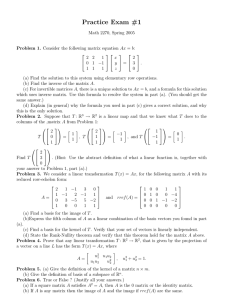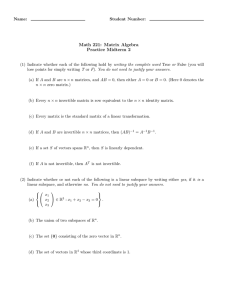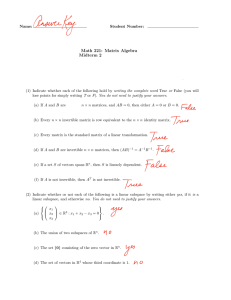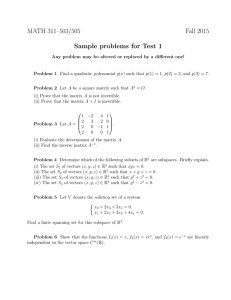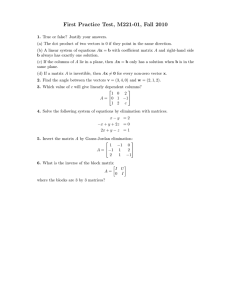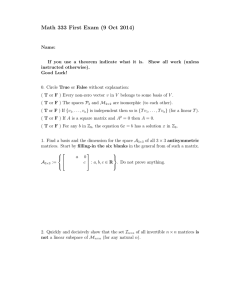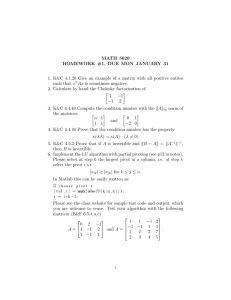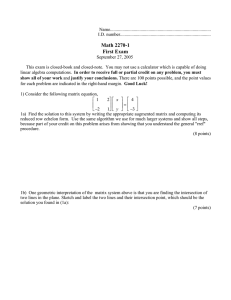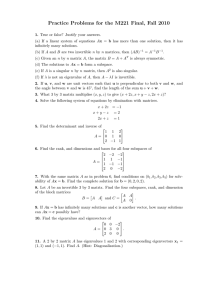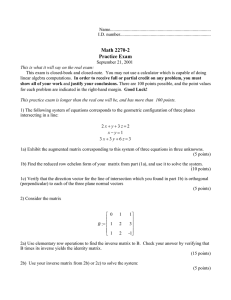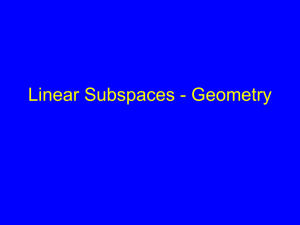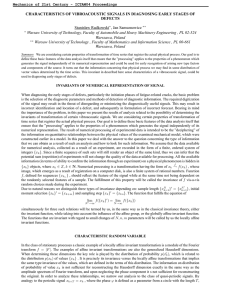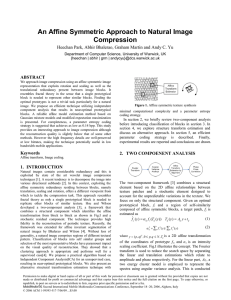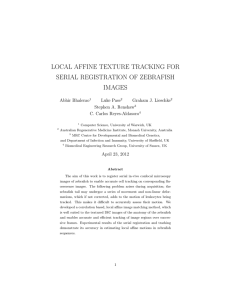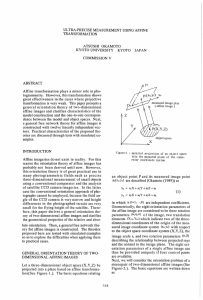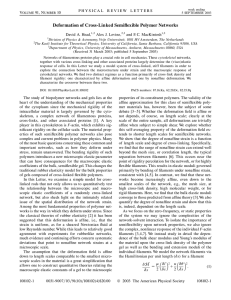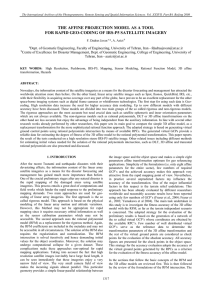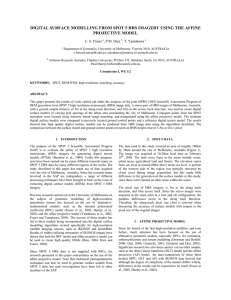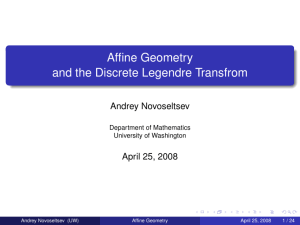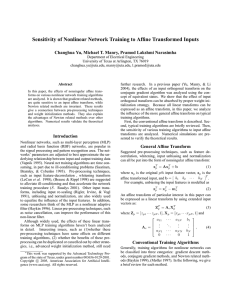Name......................................................................................... I.D. number................................................................................
advertisement
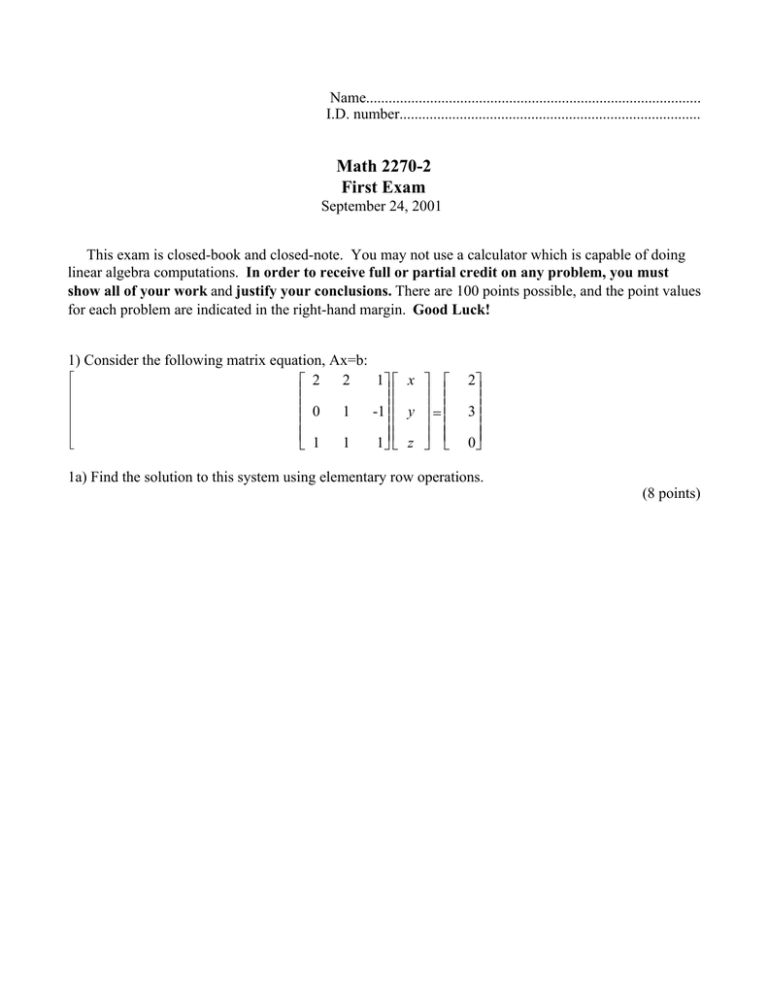
Name......................................................................................... I.D. number................................................................................ Math 2270-2 First Exam September 24, 2001 This exam is closed-book and closed-note. You may not use a calculator which is capable of doing linear algebra computations. In order to receive full or partial credit on any problem, you must show all of your work and justify your conclusions. There are 100 points possible, and the point values for each problem are indicated in the right-hand margin. Good Luck! 1) Consider the following matrix equation, Ax=b: 2 1 x 2 0 1 -1 y = 1 1 z 1 2 3 0 1a) Find the solution to this system using elementary row operations. (8 points) 1b) Find the inverse matrix to the matrix A from part 1a: 2 2 1 A := 0 1 1 1 -1 1 (12 points) 1c) For invertible matrices A, there is a unique solution to Ax=b, and a formula for this solution which uses the inverse matrix. Use this formula to resolve the system in part (a). (You should get the same answer!) (5 points) 1d) Explain (in general) why the formula you used in 1c gives a correct solution, and why this is the only solution. (5 points) 2) Here is an affine mapping picture, which depicts the unit square and its image after applying a certain affine map. find the map! 3 2 1 –1 –0.5 0 0.5 1 –1 Find an explicit formula for the affine map AND then verify that your formula gives the correct values for the images of the four couners of the unit square. (One way to find the affine map formula is to actually work backwards from the images of the four corners.) (15 points) 3) Suppose that L is a linear map from R^3 to R^2, and that we know what L does to the columns of the matrix A from problem 1: 2 1 L 0 = 1 1 2 -1 L 1 = 1 1 1 0 L -1 = 1 1 Find 2 L 3 0 Hint: Use the abstract definition of what a linear function is, together with your answer to problem 1a. (10 points) 4) We consider a linear map f(x)=Ax, for the following matrix A. We also display the reduced row echelon form of A: 1 -1 3 0 2 1 -1 2 -1 1 A := 0 3 -5 5 -2 0 0 1 1 1 1 1 1 0 0 0 1 0 0 -4 RREF := 0 0 1 -1 -2 0 0 0 0 0 4a) Find a basis for the image of f. Justify your work. (5 points) 4b) Express the fifth column of A as a linear combination of the basis vectors you found in part 5a. (5 points) 4c) Find a basis for the kernel of f. Verify that your set of vectors is linearly independent. (10 points) 4d) State the theorem which relates the the dimensions of image(f), kernel(f) to the matrix dimensions. Verify that this theorem holds for the matrix A above. (5 points) 5) True-False: 2 points for the right answer and 2 points for the justification, on each part: (20 points total) 5a) If A,B,C,D are matrices, and if their dimensions are appropriate to the indicated multiplications, then it is always true that (A + B ) (C + D) = AC + BC + AD + BD 5b. There exist three 2x2 invertible matrices A, B, and C so that the product ABC is not invertible. 5c) If A is a square matrix and if A2 = A then A is either the identity matrix or the zero matrix. 5d) The only four-dimensional subspace of R^4 is R^4 itself. 5e) If W is a subspace of dimension k then any collection of more than k vectors spans W.
